Welcome to your all-in-one guide where comfort meets design, and innovation embraces sustainability! This year brings exciting shifts in office furniture, aiming to enhance our workspace both visually and ergonomically. With an emphasis on promoting well-being, boosting productivity, and being kind to our planet, let’s dive into the trends that are reshaping our office environments.
We’ve all heard it – sitting all day is the new smoking. Height Adjustable and standing desks encourage us to alternate between sitting and standing, promoting better posture and circulation. Studies show that using these desks can reduce back pain and increase energy. That mid-afternoon slump might just become a thing of the past!
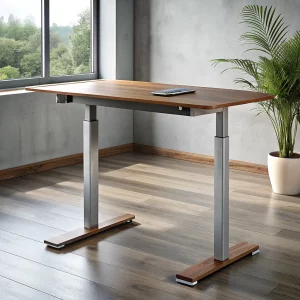
Ergonomic chairs are designed with human anatomy in mind, aiming to provide support where it’s needed the most. Look for adjustable lumbar support, armrests, seat depth, and height. These features can make a world of difference in your comfort levels.
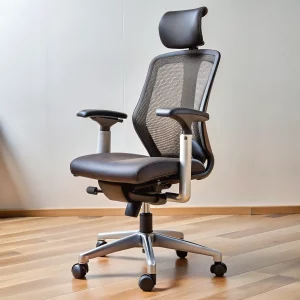
Keyboard trays, monitor stands, and footrests. These add-ons might seem minor but play a significant role in aligning your body correctly and preventing strain. By ensuring that the monitor is at eye level and the wrists are supported, we can keep common complaints like eye strain and carpal tunnel syndrome at bay. Consider your daily tasks and setup. A graphic designer might benefit from a different set of accessories compared to a data analyst, for instance.
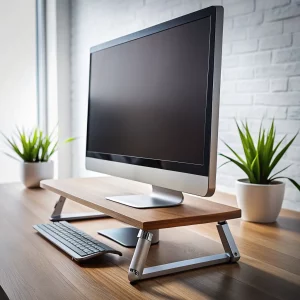
Modular pieces can be rearranged to suit evolving teams and tasks, making them perfect for the dynamic nature of modern work. From desks that can be pieced together to create collaborative spaces to individual pods, the possibilities are endless. These pieces can help maximize limited square footage, offering functionality without sacrificing style.
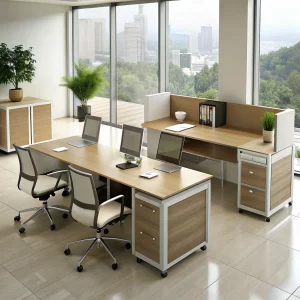
Think of desks with built-in bookshelves or ottomans that double as filing cabinets. It’s all about smart design. A conference table that splits into individual workstations or foldable chairs stored away when not in use shows this principle in action. This approach not only saves space but also encourages us to think creatively about our needs and how our environment can meet them.
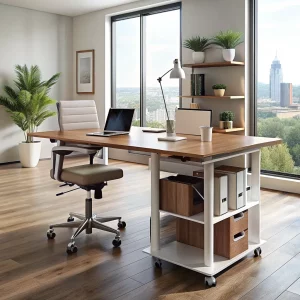
When floor space is at a premium, looking up can offer new possibilities for storage and decoration. Shelving units, drop-down desks, and even vertical gardens can transform an office while keeping the floor clear. Ensure installations are secure and consider how they can be best integrated into the daily flow of work.

Bamboo, reclaimed wood, and recycled plastics aren’t just sustainable; they also add a unique aesthetic to office furniture. Aside from reducing your carbon footprint, these materials often come with stories of their origins, adding character to your space.

Pieces designed to harness natural light reduce the reliance on artificial lighting, offering both savings and a mood boost. Position desks and work areas to make the most of windows. Adding plants not only purifies the air but also brings a slice of nature indoors. From smart thermostats to LED desk lamps, technology can play a big role in making our offices more sustainable.
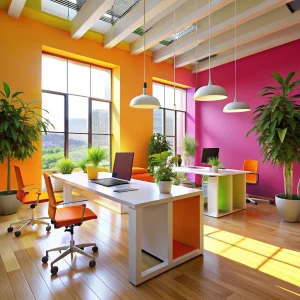
While recycled items are broken down and transformed, upcycled pieces are creatively repurposed without extensive processing. Desks made from reclaimed doors or bookshelves fashioned from old pipes and wood planks exemplify this trend beautifully. It’s not just about reducing waste. Upcycling also reduces the demand for new materials, doubling its impact.

Focus on simplicity, clean lines, and a monochromatic palette. This style champions functionality without unnecessary frills. A clutter-free environment can reduce distractions and help direct attention to the tasks at hand. It’s about creating a peaceful, productive space. Choose pieces that are both stylish and practical. Remember, minimalism isn’t about having less; it’s about having just what you need.
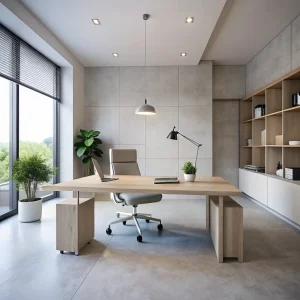
The right color choices can invigorate a space or create aA statement chair or a vibrant rug can serve as the centerpiece of your office, bringing energy and personality to the space. calming oasis. It’s fascinating how much our environment affects our work. While aesthetics are important, don’t sacrifice comfort and ergonomics. A beautiful chair is no good if it’s not comfortable!
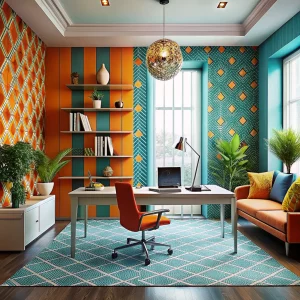
Bringing the outdoors inside through natural materials, plants, and even water features can boost our connection to the natural world. Look for pieces that mimic natural forms or incorporate organic materials. The goal is to blur the lines between indoors and out. Studies have shown that incorporating nature into our workspaces can reduce stress, enhance creativity, and improve our overall well-being.
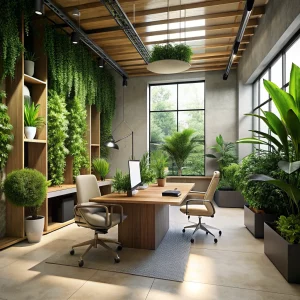
In today’s digital age, being able to charge and connect our devices seamlessly is a must. Furniture that incorporates technology can make all the difference. Imagine not having to untangle cords or search for an outlet. Built-in solutions create a sleek, organized space. Consider your tech needs and look for furniture that offers compatibility and ease of use.

Furniture with built-in lighting or climate control allows for a customized work experience, catering to individual preferences. Lighting can influence our mood and energy levels, while the right temperature can keep us comfortable throughout the day. Desks and chairs with adjustable settings give users the power to create their ideal working conditions.
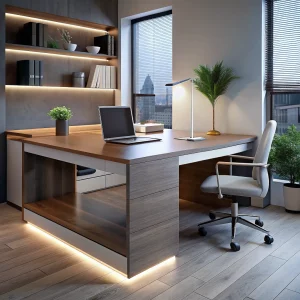
In spaces where collaboration is key, having areas for focused work or confidential conversations is essential. Effective design can buffer noise and create a sense of personal space, even in busy environments. From sleek, modern pods to sound-absorbing panels, there are solutions to fit every office aesthetic and need.
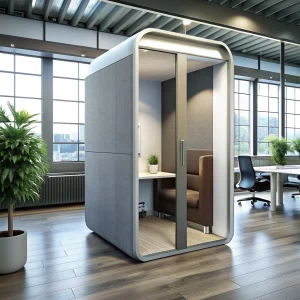
This year’s office furniture trends significantly focus on creating spaces that are ergonomic, sustainable, multifunctional, aesthetically pleasing, and integrated with technology. By embracing these trends, businesses can foster a more comfortable, productive, and motivating environment for their employees.
Extremely. Choosing ergonomic furniture can prevent injuries and increase comfort, directly impacting productivity and happiness at work
Yes! Many eco-friendly options are competitively priced, and the long-term benefits of durability and sustainability can lead to greater savings over time.
Look for versatility, storage solutions, and the ability to reconfigure pieces according to your current needs. Remember, space-saving doesn’t have to mean sacrificing style.
Technology integration can streamline tasks, reduce clutter, and keep devices charged and ready to go, minimizing distractions and keeping the focus on work.
The design and aesthetics of an office can significantly affect morale, reflecting the company’s values and creating an environment that employees are excited to work in. Thoughtful design choices can foster a sense of belonging and pride in the workplace.
Through thoughtful consideration and strategic selection of office furniture following these trends, companies can not only improve their workspaces but also contribute positively to their employees’ well-being and the planet.
SHOWROOM TIMINGS :
Monday to Saturday
9:00AM – 7:00 PM
ADDRESS:
© 2022-2023 Designcraft. All Rights Reserved
Executive Desk
Economic Desk
Reception Desk
Workstation
Conference Desk
Round Meeting Table
Height Adjustable Desk
Coffee Table